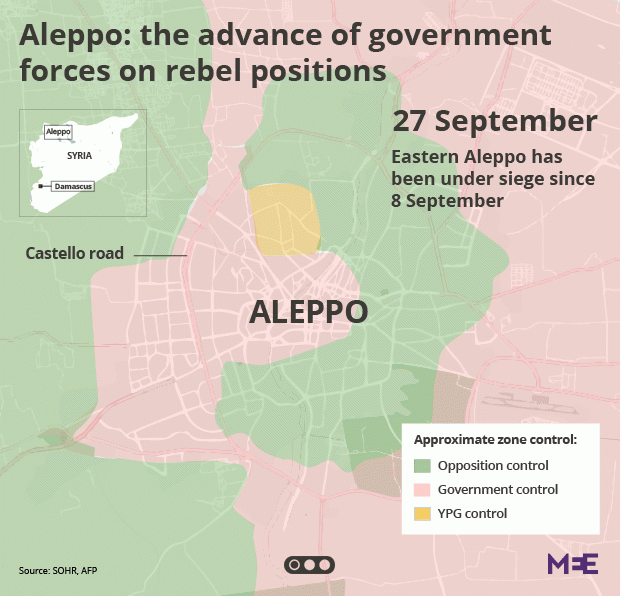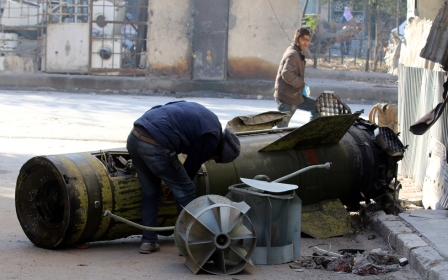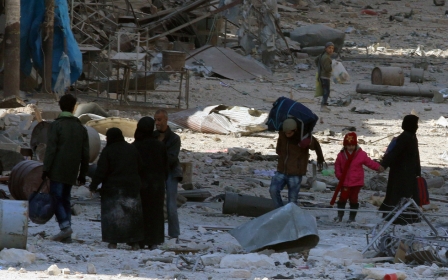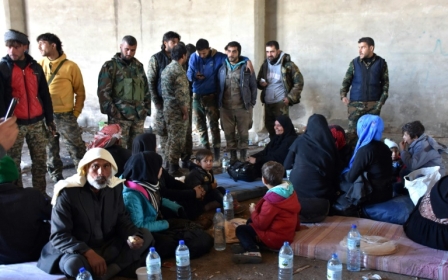Syrian forces storm southeast Aleppo as UN warns of rebel capitulation
Syrian rebels were fighting pro-government militias on the southeastern edge of opposition-held territory in Aleppo on Tuesday, a rebel official said, as bomb attacks were reported to have killed dozens of civilians trying to flee the violence.
Up to 20,000 people have fled the city over the past 72 hours, the International Committee of the Red Cross said on Tuesday night, after pro-government forces captured almost half of all rebel-held territory in lightning advances along the northern front on Monday, forcing rebel forces to retreat to form a new line of defence.
ICRC spokeswoman Krista Armstrong said the figure was an estimate and the situation remained fluid as "people are fleeing in different directions".
East Aleppo has been under government siege for more than four months, with international aid stocks exhausted and food supplies running low.
World Food Programme spokeswoman Bettina Luescher said civilians were enduring a "slow motion descent into hell".
Government forces have advanced swiftly in their two-week operation, capturing all of the city's northeast in a major blow to the opposition.
The advances in the south on Tuesday suggest the Syrian army is attempting to envelop the flanks of rebel fighters and force further retreats.
Zouhir al-Shimale, an MEE contributor in Sakhur, eastern Aleppo, said residents were bombed by Syrian forces as they tried to flee on foot from the Bab al-Nairab area into government-held territory.
Shimale said the attack killed 28 civilians, including many women and children. The civil defence White Helmets separately put the toll at 25.
In an audio recording punctuated by the sound of explosions and gunfire, Shimale said fighting was intensifying around his district, and barrel bombs had been falling all morning on Tuesday. Sakhur was reportedly taken by government forces on Monday.
"It's totally crazy, no one knows what will happen," he said. Things are escalating. There are many casualties among civilians now, even though people are not often going into the streets.
"Even if it is cloudy they (the Syrian air force) are proceeding with their attacks."
According to Human Rights Watch, the government was dropping leaflets on eastern Aleppo telling residents rebels had failed and they would be "annihilated" if they did not leave.
The UN envoy for Syria, Staffan de Mistura, said on Tuesday that he could not say how long the rebel resistance would last.
"Clearly, I cannot deny - this is a military acceleration and I can't tell you how long eastern Aleppo will last," he told the European Parliament. "There is a constant increase of movement on the military side."
However, rebel fighters denied there had been new advances in the south.
"There are no new advances (by government forces) but the bombardment and battles are still fierce, particularly in Aziza," an official in the Jabha Shamiya rebel group told the Reuters news agency.
The official said there was a large mobilisation of pro-government militias in the area on Monday night.
Igor Konashenkov, a major general and spokesman for the Russian defence ministry, said on Monday: "During the last 24 hours, thanks to very well prepared and careful actions, Syrian soldiers were able to radically change the situation,"
"Practically half of the territory occupied by rebels in recent years in the eastern part of Aleppo has been completely liberated."
As a result, thousands of residents of eastern Aleppo have fled shifting frontlines in the last few days, both within the shrinking rebel-held sector and across to government-held districts.
Many civilians have fled to Kurdish areas of the city, amid claims by rebel groups that Kurds are acting in concert with the Syrian army and its allies.
Middle East Eye propose une couverture et une analyse indépendantes et incomparables du Moyen-Orient, de l’Afrique du Nord et d’autres régions du monde. Pour en savoir plus sur la reprise de ce contenu et les frais qui s’appliquent, veuillez remplir ce formulaire [en anglais]. Pour en savoir plus sur MEE, cliquez ici [en anglais].





